myHIN Blog
Category: Tips Articles

November 03, 2013
Did You Know…
Did you know that in-home HIV testing was possible and readily available to the public, inexpensively? Well it is, with OraQuick. I’ve noticed (upon my own personal observation) many people are ashamed and just don’t want to be seen getting tested. OraQuick completely solves that issue.
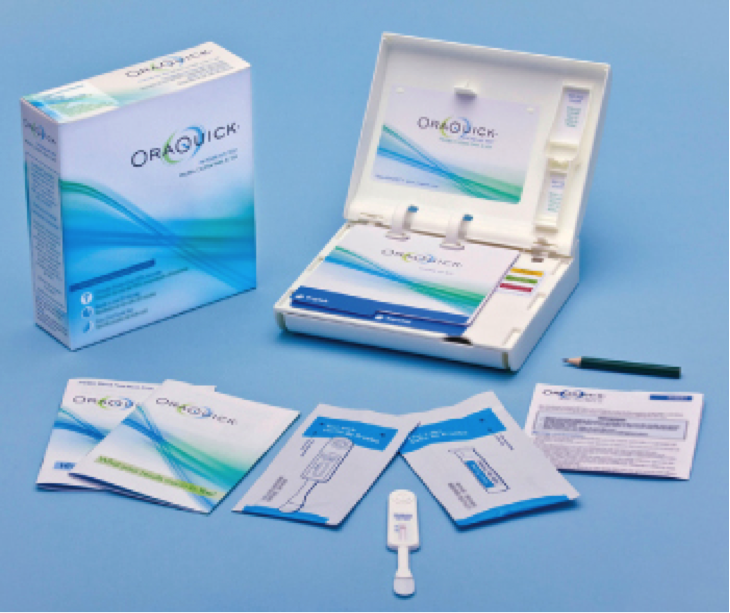
OraQuick is an in-home testing mechanism testing for HIV-1 and HIV-2. Being that it’s in-home, you don’t have to worry about confidentiality or anonymity being broken. The only person/people you’d have to worry about knowing your results are you, yourself…and well just you.
A couple of facts via www.oraquick.com concerning OraQuick:
- OraQuick is the first FDA-approved oral swab in-home test
- This is based on the same HIV test that healthcare professionals have used since 2004
- You get results in 20 minutes
- Being that this is an oral test, no blood is involved. You just swipe you gums
- Your test kit includes: step-by-step directions, an oral swab test stick and tube with solution, information booklets on HIV and testing, and package insert containing information about the test
You can purchase your OraQuick kit on its website as well as at some of your local health supply stores such as Rite Aid, CVS, Walgreens and even Wal-Mart as well as Kroger. Purchasing via the OraQuick website, it’s $39.99 (not including shipping and handling). Purchasing at Rite Aid would run you about $29.99.
I stress the importance of getting tested because it’s important and at that readily available. I feel as though it’s no excuse to have not been tested especially if you haven’t ever or your test results are invalid. College organizations are offering FREE testing, many clinics are offering FREE testing, and if you don’t want to do either, you can do so right in your own home for a fee that’s incomparable to knowing your status.
Share

October 21, 2013
Breast Cancer: Study Results, Causes, and Health Literacy
When thinking about breast cancer, many people automatically shift their focus to women. In particular, women within the African American community. Studies have shown that breast cancer is more common in white women than African American women. In all actuality, men are also susceptible to breast cancer. Just like women, men do have breast tissue, which has the possibility of developing breast cancer.
I was pretty surprised when I learned of this news. From my research, the exact cause of breast cancer is not known. Even though there is no exact cause, the risk of getting breast cancer increases with age. Factors such as family history and alcohol usage also increase the possibility of getting breast cancer. For males, the most cases for breast cancer have been detected between ages 60- 70. Overall, a male’s risk of obtaining breast cancer is only 1%. Though this percentage is fairly low, this doesn’t completely eliminate the possibility for men.
In terms of health literacy, everyone needs to be knowledgeable about breast cancer. Having this knowledge base can help improve the quality of life by recognizing the signs early and seeking treatment if necessary. Knowing that breast cancer is 100 times more likely in women than men, this encourages me to consistently check on the women in my life. It is my duty to ensure that they are going to get mammograms and maintaining a healthy lifestyle. Just knowing about breast cancer isn’t enough. Being proactive in your efforts can help save lives.
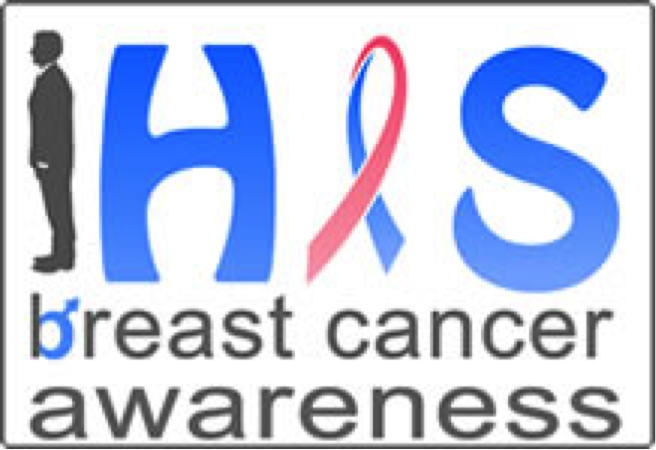
Follow us on Tumblr tumblr.myhealthimpactnetwork.org
Follow us on Twitter @myhealthimpact
Share

October 21, 2013
Telehealth & the Regulation of Mobile Applications
Could you imagine coming into the doctor’s office and getting a routine checkup with your doctor in another state? How could that be? Well with the rise in popularity with Telehealth this may possibly be a more common practice. Telehealth is the delivery of health related services and information via telecommunication technology. I’ve seen in one case a 5 foot or so mobile cart that could roll across offices with a screen on it. The Doctor was displayed on the screen and was able to communicate with the patient and other personnel in the room. It was amazing; the cart also contained an HD camera where the doctor cans accurately diagnosis the patient as if they were there. Not to mention all of this was in real time so the communication seems more natural.
This could also be applied to patients that are bedridden. Being able to see, talk, and hear your doctors from the comforts of your home that would allow patients to know that they are accurately being diagnosed. This also isn’t limited to just communication. Medical equipment can also be configured to send patient information to hospitals servers where their other personal information is stored. So imagine getting an accurate checkup from your doctor from your mobile device; pretty cool huh.

The Regulation of Mobile Applications
As consumers of technology we are all familiar with mobile applications or apps. Apps can range from entertainment all the way to media production. One area that may need more attention in this day and age is mobile medical applications. These apps are designed to provide assistant or even results to certain medical problems. Now this raises a few questions: “Are these apps begin regulated? Are they safe to use? Are they even worth trying? “
The FDA stated on Sept. 23, 2013 that they will not actively regulate low risk medical apps. They stated that apps that aren’t heavily regulated through the FDA are considered “Low risk”. Essentially if an app “transforms a mobile device into a medical device already regulated by the FDA” or can be used “as an accessory to a medical device already regulated by the FDA,” the FDA says that app will be subject to regulation.
But how many medical apps are there? Well in 2010 MobiHealthNews reported an estimate of 5,800 medical apps was available through smartphones. By June 2012 that number has risen to 40,000. Almost at the end of 2013, there’s no telling how many medical specific apps are available to us to use. Regulation is inevitable and safety will always be considered, especially when it comes to patients attempting to treat themselves.
Then there’s the side of the consumer. I personally never used an app that treated a health problem nor have I attempted to look for an app to treat a health problem. We may have the technology, but at the same time we can’t rely too much on it. Medical apps are a great step for the future, but “with great power comes great responsibility.” With more guidance and regulations, medical apps may become a standard of living.
Follow us on Tumblr tumblr.myhealthimpactnetwork.org
Follow us on Twitter @myhealthimpact
Sources
Profitable-practice.softwareadvice.com. N.p., 8 June 2013. Web. 1 Oct. 2013.
<http://profitable-practice.softwareadvice.com/
medical-apps-to-regulate-or-not-to-regulate-0713/>.
"Global Life Sciences: US-FDA Update." Sidley.com. N.p., n.d. Web. 1 Oct. 2013.
<http://www.sidley.com/
FDA-Says-it-will-not-Actively-Regulate-Low-Risk-Mobile-Medical-Apps-10-01-2013/>.
Share

October 06, 2013
Think before you say, act, and do!

I recently attended a program on my campus, which focused on discussing various “hot topics” that affect college students. The topics discussed including: Sex, Relationships, Voting, Religion, and Social Media.
What age is it appropriate to start having sex?
Though many of the topics discussed were interesting, one particular topic stood out to me—What age is it appropriate to start having sex? At first I was appalled. I never knew there was an appropriate age for sex. And if there was, what made that age, the right age?
The answers included: 13, before you go to college, when you’re married, and when you are ready to deal with the consequences.
As I sat in my seat, I began to listen to what others had to say. The answers included: 13, before you go to college, when you’re married, and when you are ready to deal with the consequences. For a moment, I felt embarrassed and hurt that peers thought this was an acceptable topic to discuss. I couldn’t believe what I was hearing.
Whether I agreed with some of the answers or not, I didn’t want to participate in a discussion that could potentially affect how another individual could make a decision when it comes to sex. Don’t get me wrong, I believe in educating my community about safe sex, but I think it’s important for people to know how much influence they could have on a person.
Whether or not I had an opinion on the topic, I made sure to keep it to myself. I didn’t want my opinion to influence someone else to make an irrational decision about sex. With that said, I think people should realize that we live in a society that most learn by example. And by that topic being discussed, we are saying its okay to assign sex to an age. And if you see nothing wrong with that, than maybe we as people need to evaluate ourselves. From this one experience I learned a valuable lesson: Think before you say, act, and do!
Follow us at tumblr.myhealthimpactnetwork.org (Tumblr)
Follow us on Twitter @myhealthimpact
Share

September 07, 2013
Too Much of a Good Thing can be a Bad Thing: Serving Sizes
It’s no secret, I gained a few pounds this summer and I’m sure I’m not the only one. So you’re asking what am I going to do now? What is my plan of action to get this weight off and get back in shape? I feel like a huge part of fixing anything is being observant of what it is that you’re doing wrong. I know exactly what I’m doing wrong and it’s completely ignoring how much I’m eating; portion sizes.
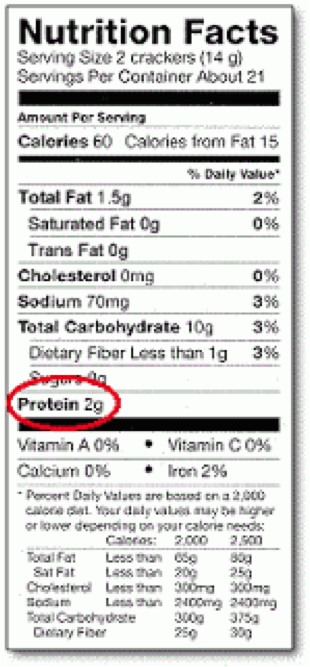
I don’t think many of us realize that we eat way more than what is suggested on the back of the box or container. If you’ve never looked and tried, I honestly think many would be surprised and still hungry. I can’t lie, it was really a shock to my body and mind because I would eat the suggested amount and my mind would say “That’s it?!?” while my stomach seemed to look at me for more. While you may think that the whole bag is what you should eat in one sitting, it’s really only like five or six.
I believe that a huge part of being healthy and getting fit is eating right. What good is eating the right things but too much of it? It sounds like purpose defeated to me. Not only am I challenging myself but I’m also challenging everyone reading this post to get it right with me. Take the time to look at the label; the amount of sodium, carbs, and the serving size. Look at the suggested serving sizes, eat just that accordingly and let’s get fit together.
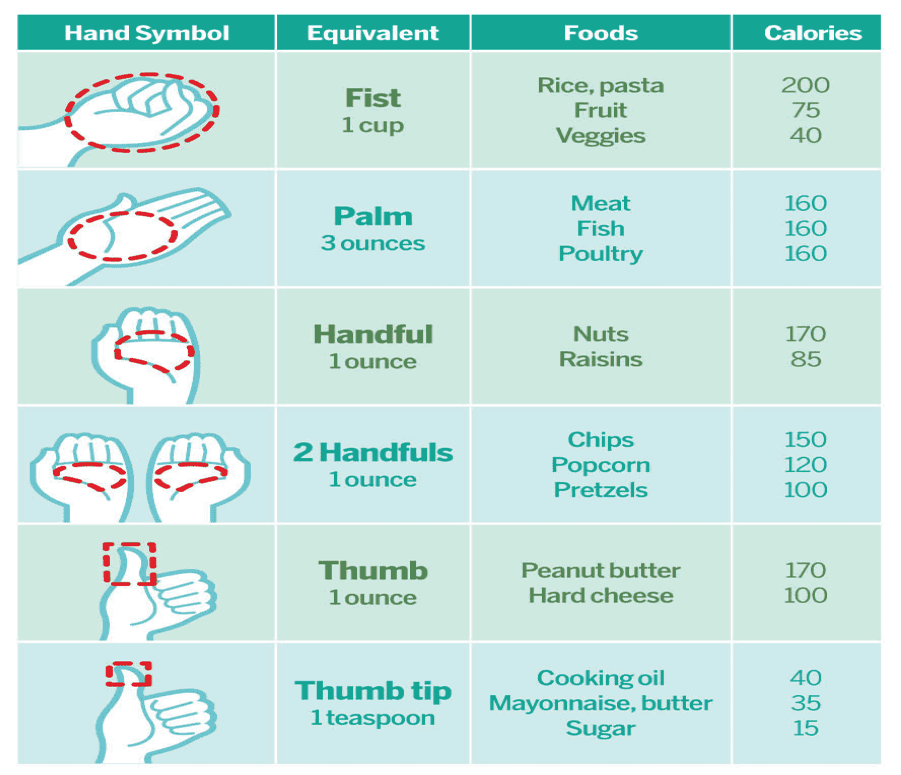
Follow us at tumblr.myhealthimpactnetwork.org (Tumblr)
Follow us on Twitter @myhealthimpact
Share

September 07, 2013
College Life
The first full week of class just concluded for students who attend NC State. Bombarded with syllabuses and numerous homework assignments, just the mere though of school can become overwhelming. While schoolwork is the premiere focus, it’s important to find a balance between school life and your own personal life. As a current senior, these are three things things I would recommend to any college student:

- Plan ahead- Calendars are extremely important. It is good to map out all of your homework assignments and exams ahead of time. By doing this, you can plan your studying accordingly.
- Prioritize what is important- As a student, you can be eager to join many clubs and organizations on campus. Though this may be a good thought, it is important to keep in mind your schoolwork, which ultimately comes first. Don’t over obligate yourself and think that you have to join every organization there is. Joining a few organizations and obtaining leadership roles is more important than just being a member in many organizations.
- Do not stress- College is supposed to be an enjoyable time. As many people say, this is the best time of your life! This is also a time that you can never get back. At this point, many college students don’t have bills to worry about. We have the chance to travel and experience the world while we don’t have any more obligations besides school.
Follow us at myhealthimpactnetwork.org/blog (Tumblr)
Follow us on Twitter @myhealthimpact
Share

August 28, 2013
Unconscious Bias and Your Health
Almost one year ago, I presented to a group of black female college students on the topic, “You Ain’t Crazy: It’s Your Mental Health”. The sisters wanted to have a frank discussion around dealing with the stress associated with day-to-day issues, such as matriculation at a predominately white institute, culture, family, sexism, racism and how life plays out. Responding to the pressures of it all, one student was asked why did she seek help with her issues, and her response was simple: “to make sure that I don’t go crazy”. One point of frustration highlighted by these students was the interplay between perception and reality. There was the constant practice of second guessing their decisions, particularly scenarios dealing with race and culture. After all, who wants to read more into a situation than is there? You know the questions: “Did he mean to say that? What does he mean? How should I take what was said? How would you perceive that?”
 Reading the situation is a complicated topic, or is it? Dr. David R. Williams, professor of sociology and public health, discusses the topic of unconscious bias in the lives of Black Americans in the September 2013 issue of @essencemag. The two-face depiction captures the article’s title, “No, You’re Not Imagining It”. Williams offers a myriad of scenarios that often causes pause. That is, as a Black person, “Is this really happening to me?”. The element of surprise can grip Black folks though the bias imparted by whites can be unintentional. Yet, the outcome or reality of the scenario can have a profound effect on the recipient. Scholars define unconscious bias as the understanding that people can consciously believe in equality while simultaneously acting on subconscious prejudices they are not aware of.
Reading the situation is a complicated topic, or is it? Dr. David R. Williams, professor of sociology and public health, discusses the topic of unconscious bias in the lives of Black Americans in the September 2013 issue of @essencemag. The two-face depiction captures the article’s title, “No, You’re Not Imagining It”. Williams offers a myriad of scenarios that often causes pause. That is, as a Black person, “Is this really happening to me?”. The element of surprise can grip Black folks though the bias imparted by whites can be unintentional. Yet, the outcome or reality of the scenario can have a profound effect on the recipient. Scholars define unconscious bias as the understanding that people can consciously believe in equality while simultaneously acting on subconscious prejudices they are not aware of.
Williams and other public health scholars have determined that the outcome is not a mere sense of challenge of the parts of Black people. As noted in the Essence piece, someone who 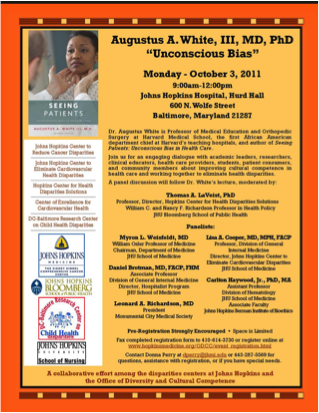 fosters and imparts racial prejudices can do so implicitly; though often automatic, the unconscious bias behavior leads to differential treatment – without effort. Unconscious bias influences the lives of Black people in the form of employment (hence, economic), educational and yes, health and health disparities – albeit heart disease, hypertension, diabetes, obesity, engagement in sexual risk behaviors and depression. While the scenarios offered by Dr. David R. Williams represent every day life as we move about, the resulting questions are commonplace but thought-provoking: “Do you see me? “, and if you do, “how do your see me? In health care, public health scholars ponder the same questions. The relevance here is how you see me starts the dialogue of how your treat me as a person and as a patient.
fosters and imparts racial prejudices can do so implicitly; though often automatic, the unconscious bias behavior leads to differential treatment – without effort. Unconscious bias influences the lives of Black people in the form of employment (hence, economic), educational and yes, health and health disparities – albeit heart disease, hypertension, diabetes, obesity, engagement in sexual risk behaviors and depression. While the scenarios offered by Dr. David R. Williams represent every day life as we move about, the resulting questions are commonplace but thought-provoking: “Do you see me? “, and if you do, “how do your see me? In health care, public health scholars ponder the same questions. The relevance here is how you see me starts the dialogue of how your treat me as a person and as a patient.
As I reflect on recent life circumstances, I ponder my own moments of unconscious bias experiences. There I am in the supermarket as I shop for the next family dinner. The checkout clerk pauses, looks and proceeds to ask me: “Why is your hair so short? Are you a cancer patient, or are you making a statement?” Now, the picture shown here is not I, but the style is one that I own. I am not making a statement nor am I a cancer patient. The politics, bias and perceptions of Black hair, particularly for Black women, is a subject reserved for a read of Dr. Lynette Kvasny’s blog, Black Women’s Love Affair with Hair”. Yet, the very question and judgment (“or making a statement, cancer patient) speaks volumes. My response to the clerk was “what if I am a cancer patient?” His apologetic comments followed as I completed my transaction.
shop for the next family dinner. The checkout clerk pauses, looks and proceeds to ask me: “Why is your hair so short? Are you a cancer patient, or are you making a statement?” Now, the picture shown here is not I, but the style is one that I own. I am not making a statement nor am I a cancer patient. The politics, bias and perceptions of Black hair, particularly for Black women, is a subject reserved for a read of Dr. Lynette Kvasny’s blog, Black Women’s Love Affair with Hair”. Yet, the very question and judgment (“or making a statement, cancer patient) speaks volumes. My response to the clerk was “what if I am a cancer patient?” His apologetic comments followed as I completed my transaction.
Case 2: I had a medical procedure done which was a high stress experience . The waiting for the test results was heave, scary and a prayerful time. During the film read with a physician, I stated aloud” “the mass has a meniscus”. To which the physician replied, “how do you know that? How do you know meniscus? How do you know this? This surprises me”. His surprise momentarily precluded the focus on my medical care. My simple reply to his disbelief was “Chemistry 101 Lab and can we focus on my health”.
Then, there is the unconscious bias imparted in the workplace, the unconscious 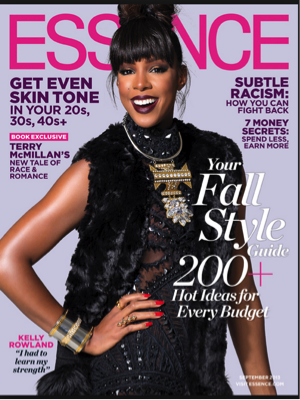 organizational impact. This level of bias creates an organizational culture that permeates bias rather intentional or unintentional. This mini-me culture can reinforce bias. This can create personal stress particular in hostile workplace environments. The “I understand; I am sorry”, conjectures do little to offer individual support or reduce health stressors. As one sister indicated in that August 2013 session, “Don’t let them steal your joy”.
organizational impact. This level of bias creates an organizational culture that permeates bias rather intentional or unintentional. This mini-me culture can reinforce bias. This can create personal stress particular in hostile workplace environments. The “I understand; I am sorry”, conjectures do little to offer individual support or reduce health stressors. As one sister indicated in that August 2013 session, “Don’t let them steal your joy”.
As Dr. David Williams offers in the @essencemag article, there are others ways to confront these scenarios. Taking care of your health tops his recommendations. Be resilient, and visualize positive outcomes. Breathe. Pause. For as much I share this advice, am I talking to myself? Yes, constantly. After all, it is my (@myhealthimpact) physical and mental health to protect.
Share

August 11, 2013
Stress LESS
As humans, we tend to let our busy lives take over and we sometimes forget about our health. Taking care of ourselves physically and mentally is vital so we can live longer and stronger! Here are a few tips on how you can stress down:
SLEEP
Caring for children, a household, work, marriage, etc may leave you very little consideration for sleep. We may think we are super heroes and are able to keep busy off of no sleep; however your body thinks otherwise. It is extremely crucial that adults to get AT LEAST 6 hours of rest (preferably 8 hours). An energized adrenaline system goes a long way when it comes to stressing less.
EAT
As you know, you need nutrients at all times in order to regulate your brain and satisfy your body. Experiencing stress may lead you to over eat or not eat at all, both negatively impacting your health. Make sure you remember to eat smaller sized portions throughout the day and make healthy choices!
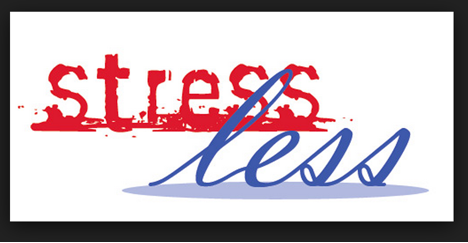
RELAX IN SILENCE
You may or may not have thought about it but too much noise may stress you out. Chaos and loudness commonly confuses the brain and often moves you to “shut down”. Take time(s) out of your day to have ME time: no external voices, outside noise or physical activity.
HAVE FUN
Do not let work or unfortunate life situations be the end of the world! Be blessed that you are here to see another day and realize someone else always has it worse than you. Understanding that you may want to be there for others, but you have to remember yourself and your health FIRST! Every once in a while go out and enjoy whatever activity makes you happy and do it with the people that you love most.
Follow us at tumblr.myhealthimpactnetwork.org (Tumblr)
Follow us on Twitter @myhealthimpact
Share
Page 6 of 6 pages ‹ First < 4 5 6
In Partnership with: Poole College of Management, College of Humanities and Social Sciences, National Science Foundation, Penn State
Take Action, Get Tested: Find Your Local Testing Center Why Get Tested?
